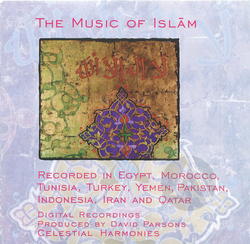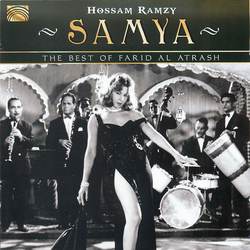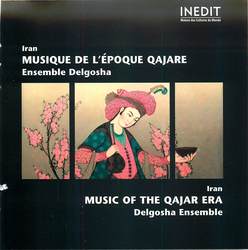
Arabic Books

An online language learning resource that covers over 70 languages. Courses are accessible from a web browser or app.










The Battle of Algiers



Streaming audio collection of sounds from around the world. Genres include reggae, Balkanic jazz, Bollywood, Arab swing and jazz, and other genres such as traditional music - fado, flamenco, klezmer, gagaku, and more.
Covers popular music of all genres and periods from 1900 to the present day, including jazz, country, folk, rap, reggae, techno, musicals, and world music.
An encyclopedia about music all over the world.
An audio and video collection for classical, opera, jazz, world, popular music, and American music. Also includes theatre, dance, and film resources.
Comprehensive coverage of music, musicians, music-making, and music scholarship. Search by instrument, era, region, and more.
Comprehensive coverage of music, musicians, music-making, and music scholarship. Search by instrument, era, region, and more.
| Rank | Country | Number of Arabic Speakers |
|---|---|---|
| 1 | Egypt | 82,449,200 |
| 2 | Algeria | 40,100,000 |
| 3 | Sudan | 28,164,500 |
| 4 | Saudi Arabia | 27,178,770 |
| 5 | Morocco | 25,003,930 |
| 6 | Iraq | 22,908,120 |
| 7 | Syria | 17,951,639 |
| 8 | Yemen | 14,671,000 |
| 9 | Tunisia | 10,800,500 |
| 10 | Jordan | 5,083,300 |
| 11 | Libya | 4,526,000 |
| 12 | Lebanon | 4,180,000 |
| 13 | Somalia | 3,788,000 |
| 14 | United Arab Emirates | 3,607,600 |
| 15 | Mauritania | 3,140,000 |
| 16 | Oman | 2,518,816 |
| 17 | Israel | 2,039,000 |
| 18 | Kuwait | 1,735,000 |
| 19 | Palestine | 1,610,000 |
| 20 | Chad | 1,320,000 |
| 21 | Qatar | 1,215,446 |
| 22 | Bahrain | 690,302 |
| 23 | Eritrea | 249,700 |
| 24 | Djibouti | 97,900 |
Sawe, Benjamin Elisha. "Arabic Speaking Countries." WorldAtlas. https://www.worldatlas.com/articles/arabic-speaking-countries.html.

She was born to a poor family. Her father, al-Shaykh Ibrāhīm al-Baltājī, was an official of the local mosque; he sang religious songs (al-inshād al-dīnī) and recited the story of the Prophet Muhammad’s life (al-qiṣṣa al-nabawiyya) for weddings and other festive occasions in nearby villages. Umm Kulthum learned to sing as a child by listening to him teaching her older brother Khālid. When he discovered the unusual strength of his daughter’s voice, her father asked her to join the family ensemble. She sang religious songs normally performed by males and appeared dressed as a boy to avoid the disapprobation that her father might face as a result of putting his daughter on stage.
Umm Kulthum had a powerful voice and wide range with uniform strength throughout. She developed control that allowed her to extend phrases and to alter resonance and placement in delicate and artistic ways, and she applied these skills to the affective delivery of lines of poetry, inventing multiple renditions of important lines. In so doing, she advanced the historic Arab art of sung poetry.
During the 1950s and 60s she became a major cultural figure. She supported the initiatives of President Jamāl ‘Abd al-Nāṣir and, following Egypt’s defeat in the 1967war, launched a series of concerts to replenish the Egyptian treasury, beginning in Paris and continuing throughout the Arab world. When she died, she was called ‘the voice and face of Egypt’.
Citation: Danielson, V. (2001). Umm Kulthum. Grove Music Online. Retrieved 30 Mar. 2020, from https://www-oxfordmusiconline-com.proxy.lib.utk.edu/grovemusic/view/10.1093/gmo/9781561592630.001.0001/omo-9781561592630-e-0000048893.